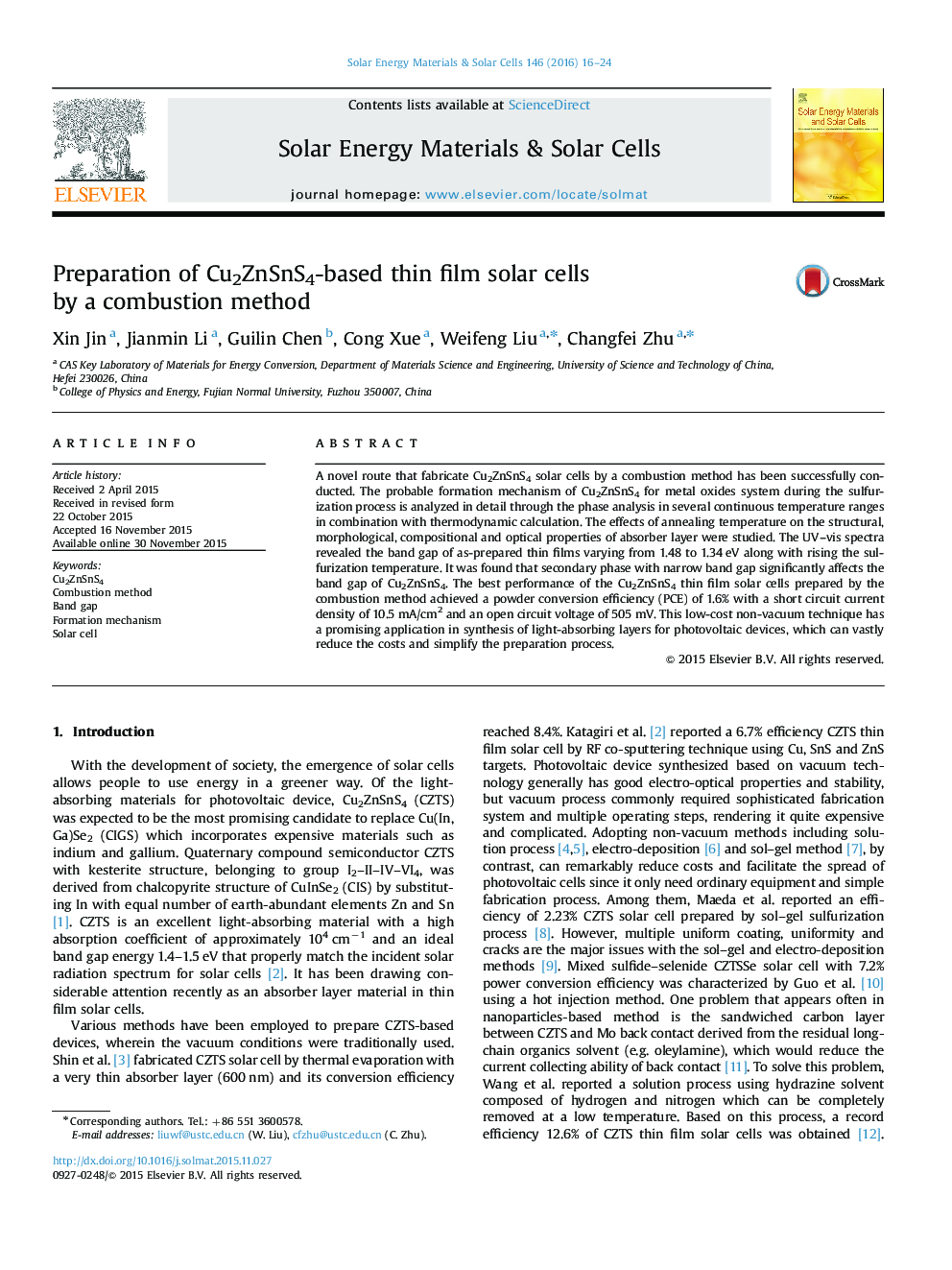| Article ID | Journal | Published Year | Pages | File Type |
|---|---|---|---|---|
| 77638 | Solar Energy Materials and Solar Cells | 2016 | 9 Pages |
•Cu2ZnSnS4 thin film solar cells were creatively fabricated by the combustion method.•A low-cost non-vacuum method was adopted using highly pure precursor powder.•We present a probable formation mechanism of Cu2ZnSnS4 for metal oxides system.•Secondary phase with narrow band gap will decrease the band gap of Cu2ZnSnS4.
A novel route that fabricate Cu2ZnSnS4 solar cells by a combustion method has been successfully conducted. The probable formation mechanism of Cu2ZnSnS4 for metal oxides system during the sulfurization process is analyzed in detail through the phase analysis in several continuous temperature ranges in combination with thermodynamic calculation. The effects of annealing temperature on the structural, morphological, compositional and optical properties of absorber layer were studied. The UV–vis spectra revealed the band gap of as-prepared thin films varying from 1.48 to 1.34 eV along with rising the sulfurization temperature. It was found that secondary phase with narrow band gap significantly affects the band gap of Cu2ZnSnS4. The best performance of the Cu2ZnSnS4 thin film solar cells prepared by the combustion method achieved a powder conversion efficiency (PCE) of 1.6% with a short circuit current density of 10.5 mA/cm2 and an open circuit voltage of 505 mV. This low-cost non-vacuum technique has a promising application in synthesis of light-absorbing layers for photovoltaic devices, which can vastly reduce the costs and simplify the preparation process.
